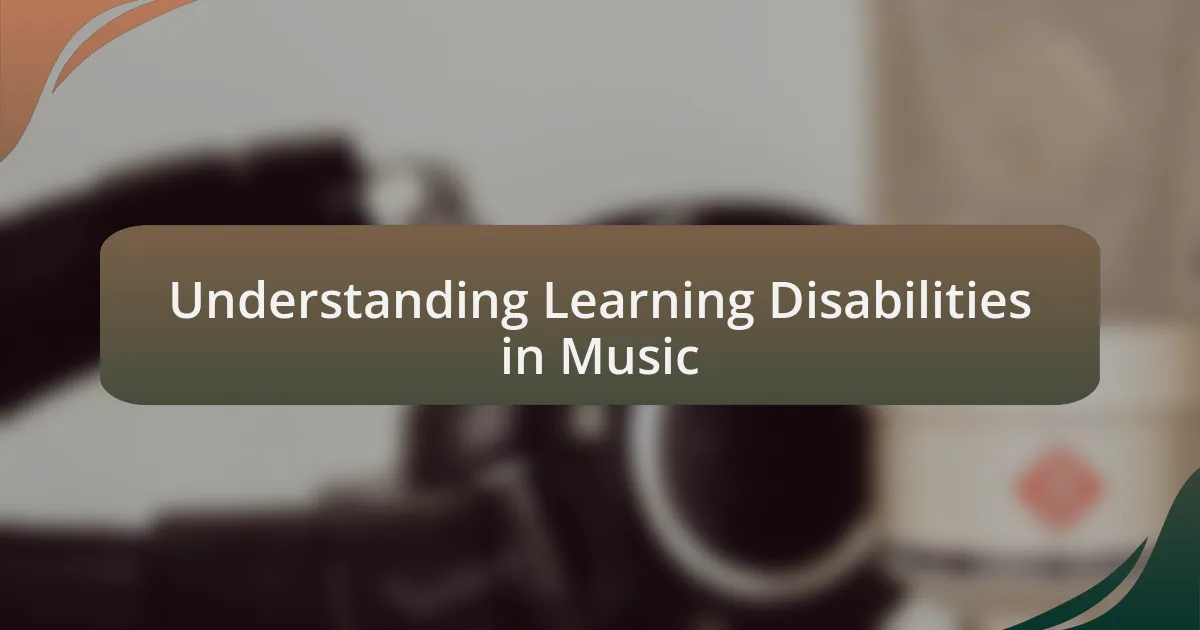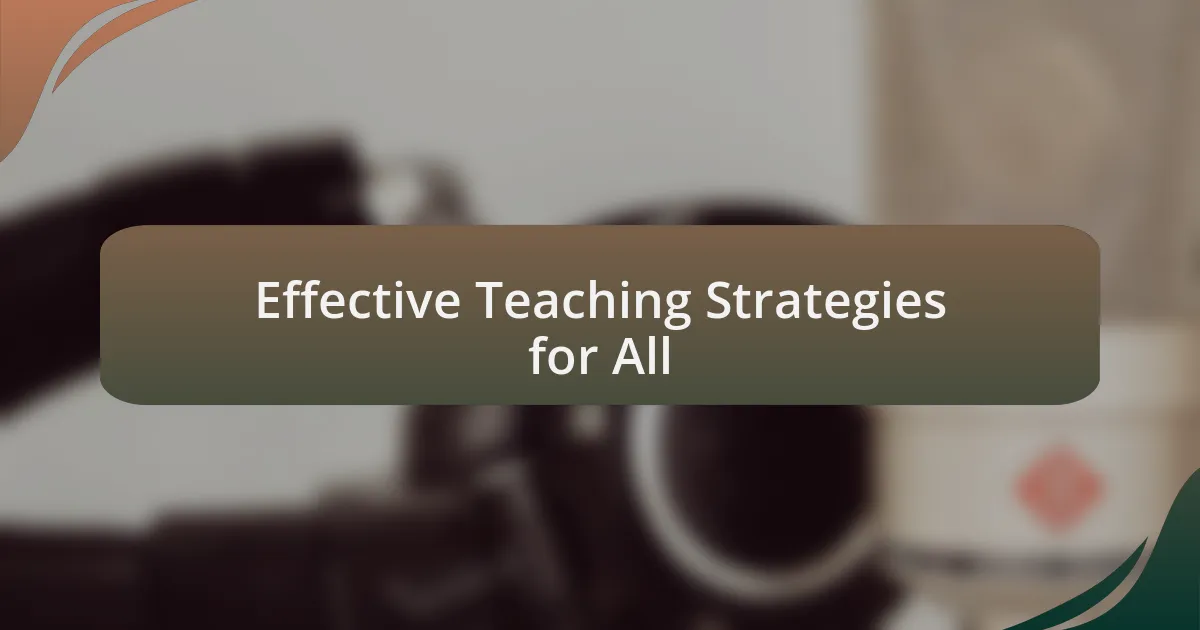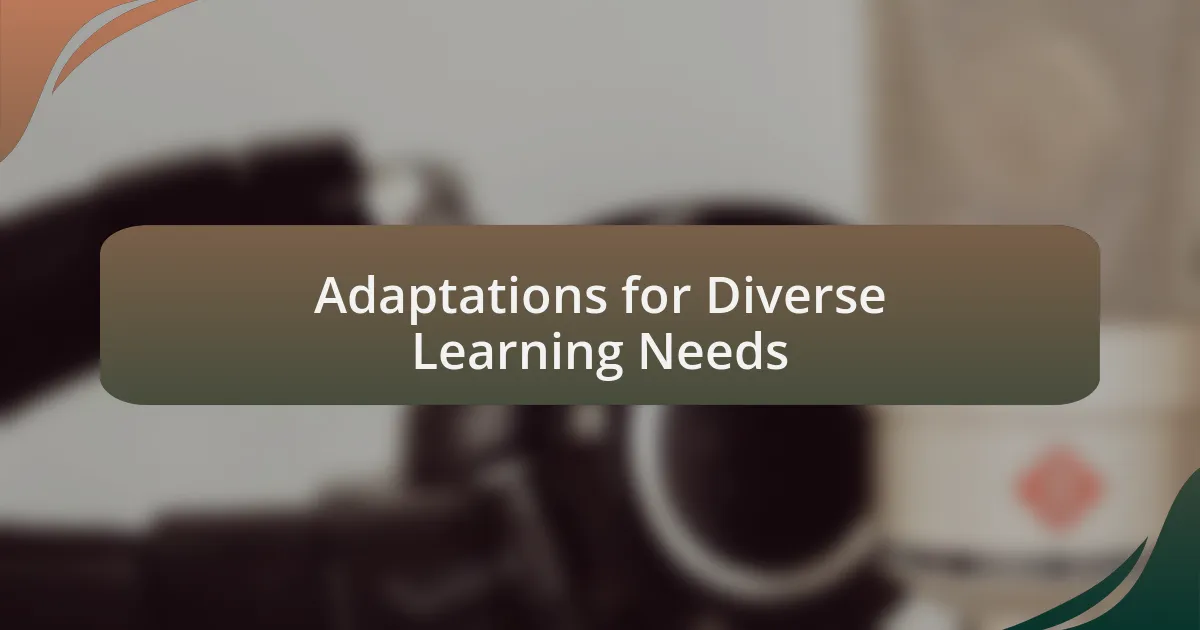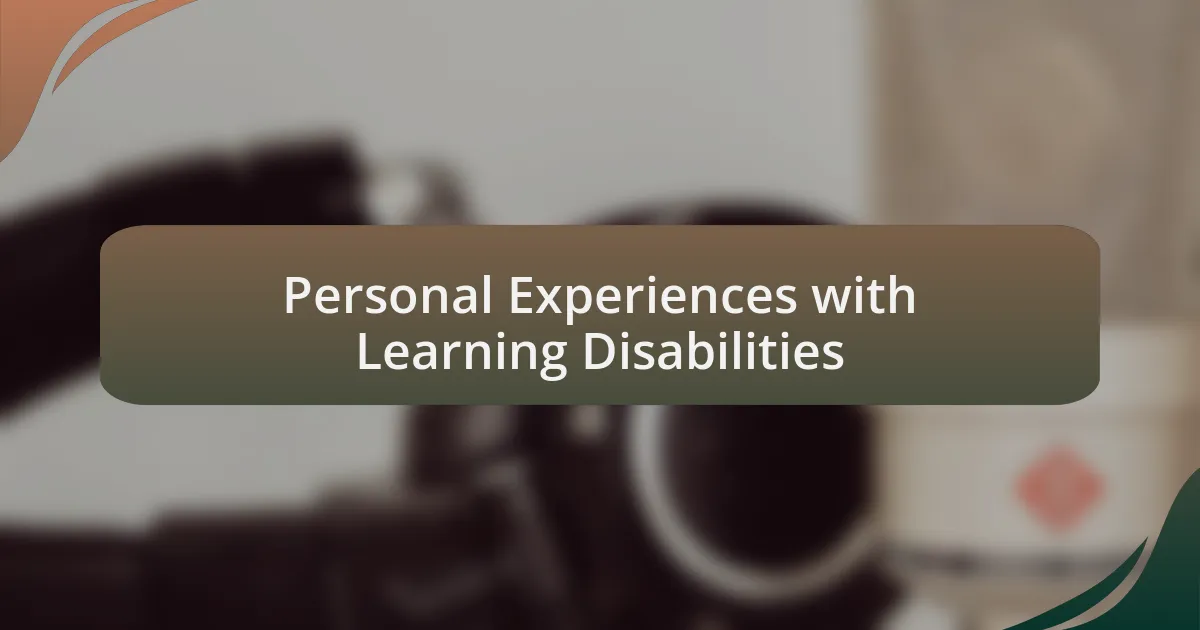Key takeaways:
- Adapting teaching methods, such as using visual aids and rhythm activities, can significantly improve the engagement and confidence of students with learning disabilities.
- Incorporating technology, like music composition apps and gamified learning tools, enhances creativity and understanding among students in music education.
- Flexible assessments, such as allowing student performances instead of traditional tests, can better showcase their understanding and cater to diverse learning needs.
- Person-centered approaches, including movement during lessons and emotional expression through music, foster a supportive learning environment for students with various challenges.

Understanding Learning Disabilities in Music
Understanding learning disabilities in music requires us to embrace the diverse ways that students engage with musical concepts. For instance, I once taught a student who struggled with auditory processing. She would hear notes differently than her peers, but once I adjusted my teaching approach, using visual aids and tactile activities, I saw her confidence blossom in the ensemble.
When working with students facing challenges such as dyslexia or ADHD, it’s crucial to recognize that traditional methods might not resonate with everyone. Have you ever considered how rhythm exercises could be a breakthrough for students who find reading music intimidating? I remember introducing a clapping exercise to one student, which not only eased his anxiety but also helped him grasp the timing of a piece.
Music, after all, is a universal language, but understanding how each student uniquely communicates and learns can make all the difference. Reflecting on my experiences, I often wonder—what if we adjusted our expectations to prioritize progress over perfection? This mindset shift has not only enriched my teaching practice but has also empowered my students to embrace their musical journeys, learning disabilities and all.

Effective Teaching Strategies for All
Embracing a variety of teaching strategies is essential in ensuring every student flourishes. I recall a lesson where I utilized color-coded sheet music to aid a student with dyscalculia. The colors helped him navigate the staff more easily, and it was incredibly rewarding to see his face light up when he played a simple melody without frustration. Have you ever witnessed a student break through a barrier simply because you adapted your approach?
Incorporating collaborative activities can also be a game-changer. During a group project, I witnessed how peer support transformed a shy learner with attention difficulties. They thrived when working alongside classmates, exchanging ideas and exploring rhythms together. It made me realize that learning doesn’t just happen in isolation but flourishes through shared experiences and collective creativity.
Moreover, incorporating technology into music education can enhance engagement. One of my students struggled with traditional methods, but once I introduced a music composition app, his passion ignited. It was fascinating to observe how he became immersed in creating songs digitally, allowing him to express himself in ways he hadn’t before. Does technology open new doors for your students? In my experience, it certainly can.

Adaptations for Diverse Learning Needs
Adapting lesson formats is vital for catering to diverse learning needs. In one class, I allowed a student with auditory processing difficulties to follow along using visual aids instead of relying solely on verbal instructions. This simple change led to an impressive increase in their confidence and participation. Have you ever considered how different mediums can unlock potential in your classroom?
I also find that using rhythm and movement helps engage students with learning disabilities. In a lively session, I introduced rhythm clapping exercises which allowed students to physically connect with the music. For a student who struggled with note reading, this hands-on approach made all the difference, and I could see their enthusiasm blossom as they moved to the beat. Isn’t it fascinating how physical engagement can bridge gaps in understanding?
Additionally, providing flexible assessments can cater to various learning styles. I once allowed a student who found traditional tests daunting to present a piece of music instead. The joy on their face as they played was unforgettable, as it highlighted their understanding far beyond what any written test could capture. How might we creatively assess our students while respecting their unique learning pathways?

Using Technology in Music Learning
In my experience, integrating technology into music education has truly transformed the way I approach teaching students with learning disabilities. I recall introducing music software that allowed students to compose and arrange their own pieces. This not only empowered them creatively but also provided a platform where they could express their musical ideas without the pressure of traditional methods. Have you ever seen a reluctant student come alive when given the chance to create through technology?
Moreover, using apps that incorporate gamified learning has proven to be a game changer. I once worked with a student who struggled with rhythm comprehension. By utilizing a rhythm game on a tablet, they engaged without even realizing they were learning. Witnessing that light bulb moment when they mastered a complex pattern was incredibly rewarding. Isn’t it amazing how play can enhance understanding in such a profound way?
I’ve also found that online resources like video tutorials can cater beautifully to visual learners. In one instance, a student with dyslexia thrived when we used instructional videos to break down challenging concepts. It allowed them to revisit lessons at their own pace, reinforcing their understanding and ultimately boosting their confidence. Have you thought about how technology can serve as a second teacher in your classroom?

Personal Experiences with Learning Disabilities
There was a time when I taught a student who had ADHD, and it was a challenge to keep them focused during lessons. I decided to incorporate movement into our sessions; we would get up and move to the music while clapping out rhythms. This physical engagement not only helped them concentrate better but also transformed our lessons into dynamic experiences. Have you ever noticed how movement can clear the mind and stimulate creativity?
In another instance, I worked with a student on the autism spectrum who expressed themselves through the piano. Initially, they had difficulty vocalizing their feelings. However, I encouraged them to compose short pieces that reflected their mood. One day, after playing a particularly emotive piece, they looked up with tears in their eyes and said, “This is how I feel.” It was a powerful reminder that music can be a bridge to understanding emotional expression. Can you imagine the significance of finding a voice through such an art form?
Reflecting on my teaching experiences, I’ve often realized how crucial patience and empathy are when addressing learning disabilities. I recall having a student with dyscalculia, and numbers were their nemesis. By breaking down musical concepts into simpler patterns and using tangible objects, they began to grasp counting rhythms surprisingly well. It taught me that sometimes, all it takes is a little creativity to unlock a student’s potential. Have you experienced a similar breakthrough with your students?